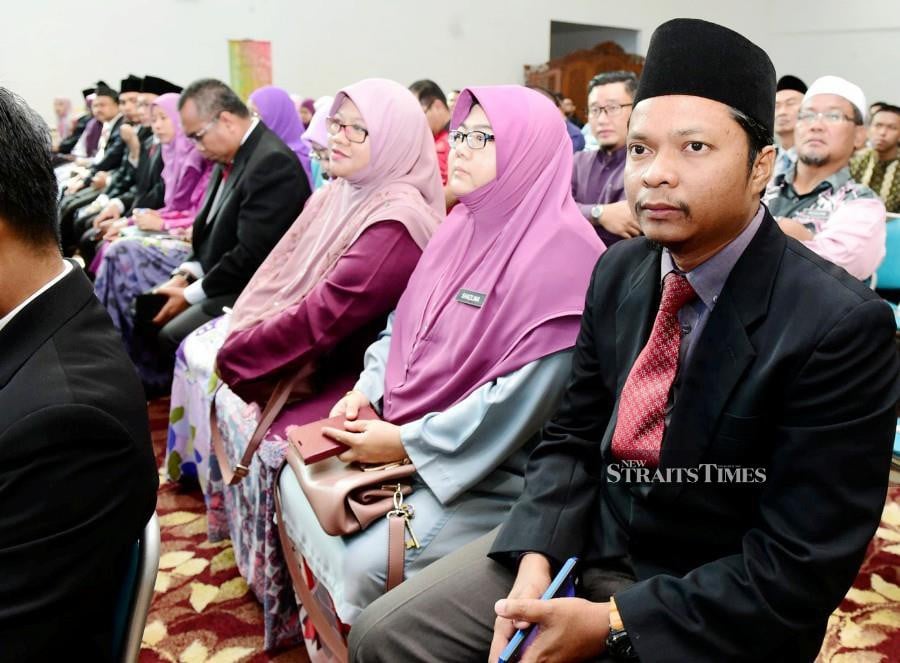LETTERS: THE Malay language was first used in the first millennia as old Malay, as part of the Austronesian language family. It was also used in the ancient Malay kingdoms of Langkasuka and Gangga Negara of the second millennia, most probably using the Kawi and Rencong scripts, some linguistic researchers say.
The earliest inscription of language in the Jawi/Arabic script was found in the Terengganu stone tablet inscription or “Batu Bersurat Terengganu” of 1303 CE, that also indicated the early arrival of Islam in Peninsular Malaysia.
Since the 12th century, the Malay language for a period of almost 1,000 years (12th to 21st centuries) has been written in the Jawi script among the Muslim Malays, from its classical forms to the refined form in use today for education, administration, social, commercial and political purposes.
There are some 10,000 classical Malay Jawi manuscripts worldwide on a variety of subjects, which include science and mathematics. Traders, envoys, scholars and foreign colonists regularly traversed the Malay Archipelago where Malay was the lingua franca.
Malay royalty used Malay in the Jawi script for official communication purposes during the Malacca Sultanate of the 15th century, and as did other subsequent Malay Sultanates, until Malaysia gained its independence in 1957.
The Malaysia Declaration of Independence of 1957 was in the Malay Jawi script, and in English. In the 20th century, Malay nationalist sentiments were also expressed in the print media using the Malay Jawi script.
Nevertheless, the heyday of Malay Language in the Jawi script would soon gradually diminish in importance towards the end of the 20th century and early 21st century.
The Malay Jawi script was gradually replaced by the Romanised or Rumi script through an arduous process of development in Malaysia and Indonesia.
It officially began with the Van Ophuijsen Spelling System (1901 Indonesia), followed by the Wilkinson Spelling System (1924 Malaysia) and Zaaba system (1933 Malaysia). It finally accumulated in the reunification spelling system for both Bahasa Indonesia and Bahasa Melayu in 1972.
Earlier on, to a certain extent these moves were viewed with much suspicion by the Malays as among the subtle means to Christianise the Malays as the Romanised script was part of the Christian Latin culture.
Malay Jawi is still the co-official and co-unofficial scripts of some Malaysian government agencies, some state governments and Brunei. In 1966, the Education Ministry stopped the teaching of Malay in Jawi script except in the teaching of Islamic education. Thus, the Malay Language in Malaysia exists in two forms: the Jawi and Romanised form. This indicates the versatility and dynamism of the Malay Language in its ability to be expressed in several scripts such as the Pallava, Jawi script and Romanised scripts.
On the other hand, Malay in the Romanised script does not do justice to the language and negates its traditional heritage in the more popular Jawi script compared to other languages of the world which are in their original scripts, such as the Yiddish language in the Hebrew script.
As the Romanised Malay script reigned supreme, the Jawi script was reduced to an inferior role taught only in Islamic studies. This gives the misconception that learning the Malay Jawi is akin to learning the Islamic religion and thus, that people might get converted to Islam in mastering Malay Jawi.
Moreover, the Jawi script uses Arabic script, which is also of a similar script to the Quran, the Muslim holy book.
The long tradition of the Malay Language in Jawi certainly qualifies it to be included in the Heritage Act of 2005 as an intangible item that needs to be conserved. This is also in line with the Malaysian Education Policy of 2013 in raising the prestige and dignity of the Malay Language and strengthening the use of the English Language.
Using the lowest form of Malay khat calligraphy is not about learning Jawi or Arabic as only the Arabic script is used as part of a drawing lesson. It is more about understanding the roots, origin and historical legacy of the national language.
BAHARUDIN MOHD SHAH
Serdang,Selangor
The views expressed in this article are the author’s own and do not necessarily reflect those of the New Straits Times





